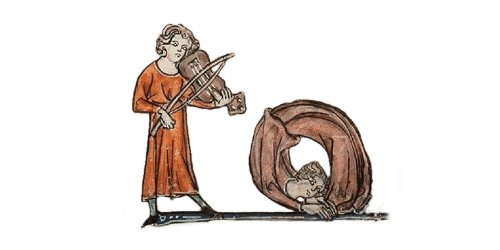By Donald Rosenberg, The Plain Dealer
February 2, 2013
Apollo’s Fire, the Cleveland Baroque Orchestra, is always on the lookout for new ways to present old music. Its latest invention is a series of “Fireside” Concerts featuring a small contingent of players in chamber music, for which no conductor needs apply.
The first program in the series, “The Intimate Vivaldi,” could have included music director Jeannette Sorrell, who, in addition to being a conductor, is an expert harpsichordist. But Sorrell handed over responsibilities for this week’s concerts to Apollo’s Fire colleagues and the admired American lutenist Ronn McFarlane, who were all in splendid form Friday at St. Paul’s Episcopal Church in Cleveland Heights.
Vivaldi was only one of the composers on the program, which also introduced music by distinguished predecessors without his household-name status: Dario Castello, Giovanni Legrenzi, Biagio Marini and Giovanni Zamboni. Still, there’s no denying the fetching vitality and variety of Vivaldi’s music, as was clear in five works by the so-called Red Priest.
With McFarlane as guest director and soloist, the emphasis was on music that barely raises its voice. The lute is an instrument of silken delicacy that almost forces listeners – especially in an ample space like St. Paul’s – to sit forward and concentrate. The same can be said for the theorbo, the exceedingly long-necked lute that William Simms played so gracefully throughout the concert.
Along with Simms, violinists Olivier Brault and Johanna Novom, violist Kristen Linfante (also the organization’s acting general manager) and cellist Rene Schiffer were sensitive to balances in every piece featuring McFarlane. The violinists went as far as playing with mutes in two Vivaldi trios that give the lute the most prominent lines.
McFarlane shaped the solo parts with lithe elegance, ornamenting deftly and entering into subtle interaction with the other instruments. In the slow movement of Vivaldi’s Trio in C major for Violin and Lute, the musicians showed how dramatic music can be on the tiniest scale.
Brault and Novom each had a chance to team with McFarlane in one of the trios, and did so with the taste and clarity they always bring to their duties. The violinists also engaged in friendly competition in Castello’s Sonata concertata and Marini’s Capriccio in G major, works of winning vivacity and color.
The revelation of the night was Legrenzi’s Sonata No. 4 for Four Strings (plus theorbo playing continuo), which haunts through dark, winding lines and moments of ethereal beauty. Zamboni’s Sonata No. 9 for solo lute made a welcome appearance with McFarlane as gracious and expressive interpreter.
But Vivaldi, perhaps naturally, prevailed, whether in the Largo from his “Winter” Concerto, shaped to the silvery hilt by Brault, or the Concerto in D major for Lute and Strings. The concerto’s slow movement is one of Vivaldi’s greatest hits, and McFarlane and company applied bountiful warmth to the music before digging into the finale’s jolly ride to the finish line.

